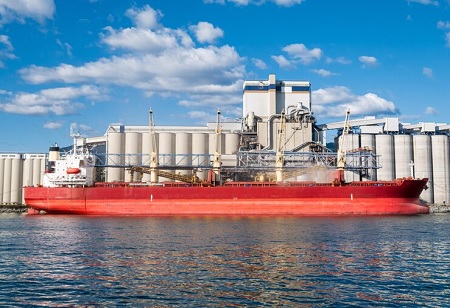
Japan Delivers First Dual-Fuel LNG Bunkering Vessel to NYK and Partners

 KEYS Bunkering West Japan Corporation (KEYS), a collaborative venture formed by Kyushu Electric Power, NYK Line, Itochu Enex, and Saibu Gas, has recently received the delivery of a newly constructed LNG bunkering vessel named KEYS Azalea. This vessel stands as Japan's inaugural LNG bunkering ship featuring dual-fuel engine technology.
KEYS Bunkering West Japan Corporation (KEYS), a collaborative venture formed by Kyushu Electric Power, NYK Line, Itochu Enex, and Saibu Gas, has recently received the delivery of a newly constructed LNG bunkering vessel named KEYS Azalea. This vessel stands as Japan's inaugural LNG bunkering ship featuring dual-fuel engine technology.
Delivered to the collaborative partners on March 28th at the Enoura Plant within Shimonoseki Shipyard & Machinery Works, owned by Mitsubishi Heavy Industries, the vessel marks a significant milestone. The construction order for the 82.4-meter-long KEYS Azalea was initiated in March 2022, with its launch occurring in July 2023.
The LNG bunkering vessel is poised to commence its operations in the LNG coastal transportation sector, alongside providing LNG bunkering services to oceangoing vessels visiting ports within the Kyushu-Setouchi region. Shipowners highlight that this marks Japan's inaugural endeavor to supply LNG fuel to ships across a broad expanse spanning from Kyushu to Setouchi.
KEYS Azalea stands as the pioneer among domestic LNG bunkering vessels, featuring a dual-fuel engine capable of operating on both LNG and heavy oil. The partners anticipate LNG to serve as a transitional solution for decarbonization, effectively eradicating sulfur oxide (SOx) emissions and cutting approximately 80% of nitrogen oxide (NOx) emissions, along with a 30% reduction in carbon dioxide (CO2) emissions.
KEYS Bunkering West Japan is a maritime shipping enterprise specializing in the provision and distribution of LNG (liquefied natural gas) as marine fuel through ship-to-ship transactions. As pioneers in LNG fuel supply in the western region of Japan, operating multiple fuel supply vessels and catering to the diverse needs of vessels spanning from Kyushu Island to the Seto Inland Sea area. the mission of the company is to support the realization of a carbon-neutral society by efficiently meeting the demands of customers and supplying LNG to a diverse array of vessels visiting ports across western Japan.

